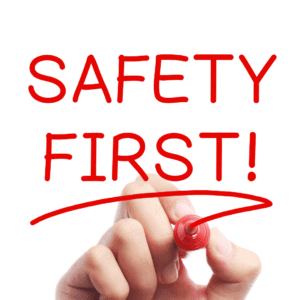 Ask Manpower:
Ask Manpower:
I really need to get back to work, but I’m nervous about the possibility of contracting COVID-19. What kinds of things are employers doing to keep workers safe?
Employers are finding lots of ways to adapt to their businesses to the COVID-19 pandemic so that they can keep employees, customers, and the general public as safe as possible. We have provided examples below to help give you an idea of some steps that employers can take to minimize risk of exposure and help ensure workplace safety during COVID-19. Keep in mind that every work environment is different, so not every company will follow all of the steps below – and some employers may take additional measures that aren’t even listed here. The way each company responds to the COVID-19 pandemic will vary greatly depending on the exposure risks of that particular workplace.
When returning to work, it is perfectly acceptable to inquire about what safety measures are being taken to protect your health. The same goes for when you are looking for work – keep an eye out for employers that advertise their enhanced safety measures, because it is a sign that the company is proactive in prioritizing employee health. If the company doesn’t advertise such information, it doesn’t mean they aren’t prioritizing safely – simply ask to learn more.
Some common safety measures that a company may implement include:
Conducting a hazard assessment.
What is the level of transmission in the local community? Where and how might employees be exposed to COVID-19 at work? How can normal business operations be adjusted to reduce or eliminate exposure? As the COVID-19 pandemic evolves, companies continue to ask themselves these questions to ensure that employee and customer health remain top priorities.
Enforcing social distancing policies.
In job environments where contact with customers or coworkers is difficult to avoid, many are doing their best to enforce social distancing. The exact method of distancing depends on the nature of the job and the setup of the facility, but some common methods employers have used are: setting up plexiglass barriers at checkout stations, rearranging work stations to increase physical space between employees and customers, adjusting operating hours or employee schedules to minimize the number of people in a facility at any given time, and providing customers with curbside options so that close proximity in an indoor setting can be avoided.
Providing PPE and training employees on proper usage.
When used consistently and correctly by covering the mouth and nose, face masks or shields offer great protection. Many employers are providing face masks or shields and training on proper usage to make it easier for employees to stay safe in the workplace.
Providing hand sanitizer and/or easy access to handwashing stations.
Employers know that clean hands help keep employees, customers, and the general public safe, so many are providing hand sanitizer dispensers throughout their facilities, and setting up hand washing stations where possible. As with PPE, the idea is to make it as easy and convenient as possible for employees to maintain a healthy and safe environment.
Conducting daily health checks.
Some facilities, especially high-volume production environments that require large numbers of employees to carry out day-to-day operations, have implemented daily health checks in which they take employee temperatures and inquire about symptoms. This goal of this safety measure is to detect signs of illness as soon as possible so that exposure risk to other employees can be minimized.
Encouraging sick employees to stay home and notify management of exposure.
Employers are encouraging sick employees to stay home so that their coworkers and customers can stay healthy. In addition, they will likely ask employees to notify them of exposure to sick individuals so that they can assess risk and take appropriate steps can be taken to keep everyone safe.
Routinely cleaning facilities, especially high traffic areas.
Regular sanitization of high-traffic areas is a great way to minimize contamination and keep work environments healthy and safe. Many employers are ramping up their regular cleaning schedules. This includes disinfecting high traffic areas multiple times throughout the day.
As always, you should look to your manager for guidance on addressing any safety concerns. Safety is everyone’s responsibility, so be sure to do your part.
 |
 |

